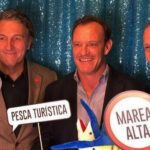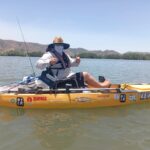FECOP Lobbies to Push Tuna Purse Seine Fishing 200 Miles Off Costa Rica’s Coast
The proposed law calls for moving tuna fishing from 40 to 60 miles offshore in Costa Rica
FECOP, the Costa Rica sport-fishing lobby group, testified before members of the nation’s Congress in a meeting held last week in San Jose. The subject was the proposed change to an existing tuna fishing law. The proposal includes moving the foreign tuna seiner fleet from 40 miles off the coast to 60 miles. Most domestic harvesters agree that the 60-mile boundary is still not enough. FECOP’s delegation included a sociologist, economist, marine biologist and sport fisherman.
The FECOP delegation made the following position statements to committee members:
While we have all become prisoners of COVID-19, nature on the other hand is thriving. We are seeing examples all over the world how quickly the environment begins to recuperate when the effects of the human element are removed. The ocean is no different and we are already seeing how reduced human interaction has positively affected Costa Rican waters.
But the coastal communities are suffering. With so many fishermen stuck on shore because there is no market for their fish or no tourists coming to fish, they are struggling to meet their living expenses and feed their families. When the COVID crisis passes, however, the fishermen will return to a healthy Pacific Ocean.
Prior to the pandemic, the ocean had been severely exploited. Illegal activities were rampant. Nearly 2,000 fishing boats were competing for marine resources within 40 miles from shore, as required by law. Costa Rica territorial waters is 11 times greater than the terrestrial area, yet most fishermen are corralled within this narrow stretch of water. The law was enacted when fish were abundant, the commercial fleet was smaller and tourist fishing was in its infancy. Today sport-fishing has grown to a $500 million annual industry with commercial longline and artisanal economic impact estimated to be nearly the same.
The current law has created a domino effect. Longliners claim foreign purse seine boats are depleting the ocean of not only tuna but other bycatch species the domestic longliners depend on. Sport fishermen argue competition for resources between the two commercial factions within the allowable zone forces longliners to intentionally target sailfish, a game fish reserved by agreement for the sport-fishing sector.
The first tuna decree in 2014 that moved purse seiners out 40 miles and protected a total 200,000 square kilometers of territorial water has demonstrated that commercial fleet management works. A study done last year with sport-fishing boats inside the 40 miles documented improved catch rates for marlin, tuna and dorado but not sailfish. The species that should have improved the most did not improve.

Prospering and Preserving for a Collective Win
Rarely are we given the opportunity to prosper from a devastating event like we are given now. Once an ocean is exploited it usually takes years if not decades of marine management, fishing bans and a large infusion of money to restore it to a healthy condition. But today, fishermen will have a healthier ocean waiting for them.
The artisanal, commercial and tourist fleet have the potential to inject more than $1 billion annually into the national economy while maintaining a healthy ocean. This can be done by a more in-depth rezoning and not just moving one sector 20 miles. To accomplish this the national fishing fleet would have to be legally allowed to fish in an expanded area, not simply limited to the first 40 miles from the coast.
To accomplish these goals and to provide equity to all domestic user-groups, FECOP proposes the following:
0 to 60 miles:
No surface longlines permitted. This zone would be open to commercial fishermen using selective gear only, like green sticking, a method which has little to no bycatch and does not leave gear in the water for other species like sea turtles to become entangled while nearing the coast in breeding season. This zone would also be used by sport fishermen and artisanal snapper/grouper harvesters.
60 to 200 miles:
This zone will allow 140 miles of territorial water for utilization by medium-scale longline vessels, green stick fishermen, and sport-fishing boats that have the capable range.
200 miles to the limit of territorial waters (which includes Coco Island):
In this zone, purse seine boats could operate in areas not protected by existing management agreements. This still gives those vessels ample fishing opportunities to meet the demands of the cannery in Puntarenas, which is a major source of employment in that coastal fishing community. It would also reduce the bycatch of non-targeted coastal species and greatly reduce the incidental trapping of dolphins. The mammals generally swim within 60 miles of the coast.
We have a unique opportunity. When the pandemic is finally under control and the country returns to normalcy, as a nation we can either continue with the status quo and allow the ocean to be exploited again. Or we can pass a new law that manages the user groups fairly and correctly to end conflicts. This in turn would improve the socio-economic status of coastal communities and maintain a healthy, self-sustaining ocean and marine resources. By approving this FECOP proposal, Costa Rica can accomplish those goals.
You May Also Like:
A Brief History of the Tuna Industry
The Costa Rica Tuna Decree Seems to be Working
Developments Impacting Sport Fishing in Costa Rica
Explaining Costa Rica’s Tuna Decree
For More Articles Like These, Subscribe To Our Newsletter
[yikes-mailchimp form=”1″]



















